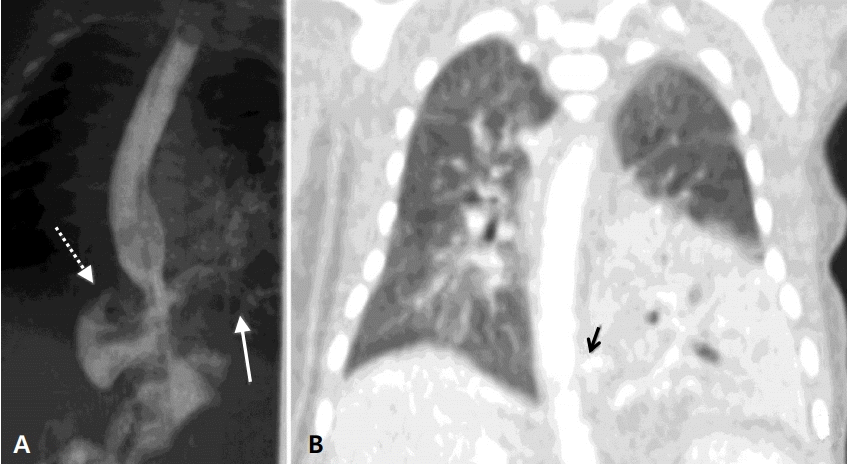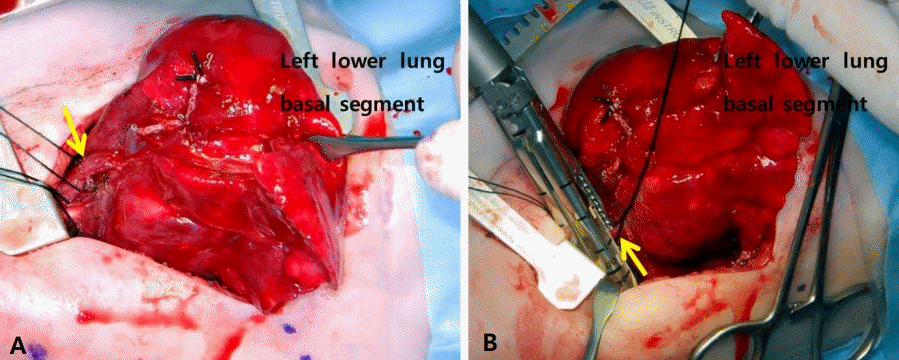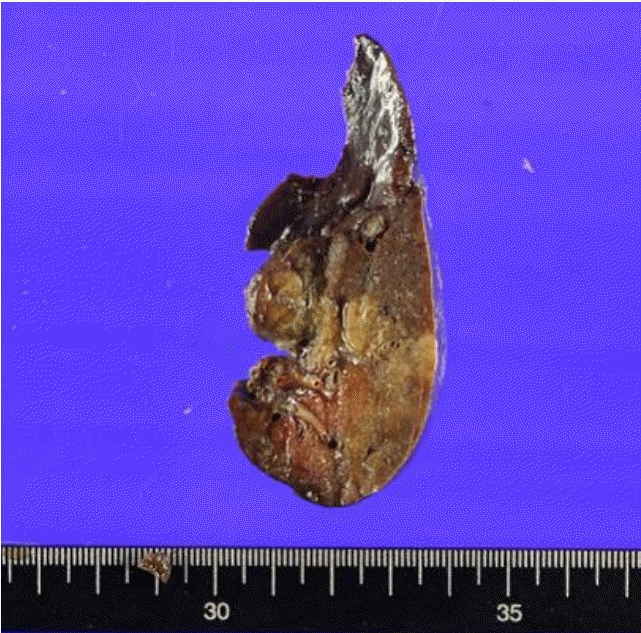1. Bokka S, Jaiswal AA, Behera BK, Mohanty MK, Khare MK, Garg AK. Esophageal lung: a rare type of communicating bronchopulmonary foregut malformation, case report with review of literature. J Indian Assoc Pediatr Surg. 2015; 20:92–4.
2. Sugandhi N, Sharma P, Agarwala S, Kabra SK, Gupta AK, Gupta DK. Esophageal lung: presentation, management, and review of literature. J Pediatr Surg. 2011; 46:1634–7.
3. Verma A, Mohan S, Kathuria M, Baijal SS. Esophageal bronchus: case report and review of the literature. Acta Radiol. 2008; 49:138–41.
4. Pimpalwar AP, Hassan SF. Esophageal bronchus in an infant: a rare cause of recurrent pneumonia. J Pediatr Surg. 2012; 47:e5. –8.
5. Chung JH, Lim GY, Kim SY. Esophageal lung diagnosed following the primary repair of esophageal atresia with tracheo-esophageal fistula in a neonate. Surg Radiol Anat. 2014; 36:397–400.
6. Kim CW, Kim DH. Single-incision video-assisted thoracic surgery lobectomy in the treatment of adult communicating bronchopulmonary foregut malformation with large aberrant artery. J Thorac Dis. 2016; 8:E148–51.
7. Park T, Jung K, Kim HY, Jung SE, Park KW. Thoracoscopic management of a communicating bronchopulmonary foregut malformation in a 23-month-old child. J Pediatr Surg. 2012; 47:e21. –3.
8. Eom DW, Kang GH, Kim JW, Ryu DS. Unusual bronchopulmonary foregut malformation associated with pericardial defect: bronchogenic cyst communicating with tubular esophageal duplication. J Korean Med Sci. 2007; 22:564–7.
9. Kim CY, Goo HW, Kim HJ, Choi SJ, Cho YS, Lee JH, et al. Communicating bronchopulmonary foregut malformation: a case report. J Korean Radiol Soc. 2000; 43:59–61.
10. Rathi V, Deshpande S, Nazim A, Domkundwar S. Esophageal lung: a rare case of communicating bronchopulmonary foregut malformation. Indian J Basic Appl Med Res. 2017; 6:450–4.
11. Ren H, Duan L, Zhao B, Wu X, Zhang H, Liu C. Diagnosis and treatment of communicating bronchopulmonary foregut malformation: report of two cases and review of the literature. Medicine (Baltimore). 2017; 96:e6307.
12. Lacina S, Townley R, Radecki L, Stockinger F, Wyngaarden M. Esophageal lung with cardiac abnormalities. Chest. 1981; 79:468–70.
13. Heithoff KB, Sane SM, Williams HJ, Jarvis CJ, Carter J, Kane P, et al. Bronchopulmonary foregut malformations: a unifying etiological concept. AJR Am J Roentgenol. 1976; 126:46–55.
14. Hanna EA. Broncho-esophageal fistula with total sequestration of the right lung. Ann Surg. 1964; 159:599–603.
15. Leithiser RE Jr, Capitanio MA, Macpherson RI, Wood BP. "Communicating" bronchopulmonary foregut malformations. AJR Am J Roentgenol. 1986; 146:227–31.
16. Srikanth MS, Ford EG, Stanley P, Mahour GH. Communicating bronchopulmonary foregut malformations: classification and embryogenesis. J Pediatr Surg. 1992; 27:732–6.
17. Gerle RD, Jaretzki A 3rd, Ashley CA, Berne AS. Congenital bronchopulmonary-foregut malformation: pulmonary sequestration communicating with the gastrointestinal tract. N Engl J Med. 1968; 278:1413–9.
18. Elumalai G, Arjet H. “Tracheoesophageal fistula” embryological basis and its clinical significance. Int J Dev Biol. 2016; 100:43414–9.
19. Halasz NA, Lindskog GE, Liebow AA. Esophago-bronchial fistula and bronchopulmonary sequestration: report of a case and review of the literature. Ann Surg. 1962; 155:215–20.






 PDF
PDF Citation
Citation Print
Print





 XML Download
XML Download